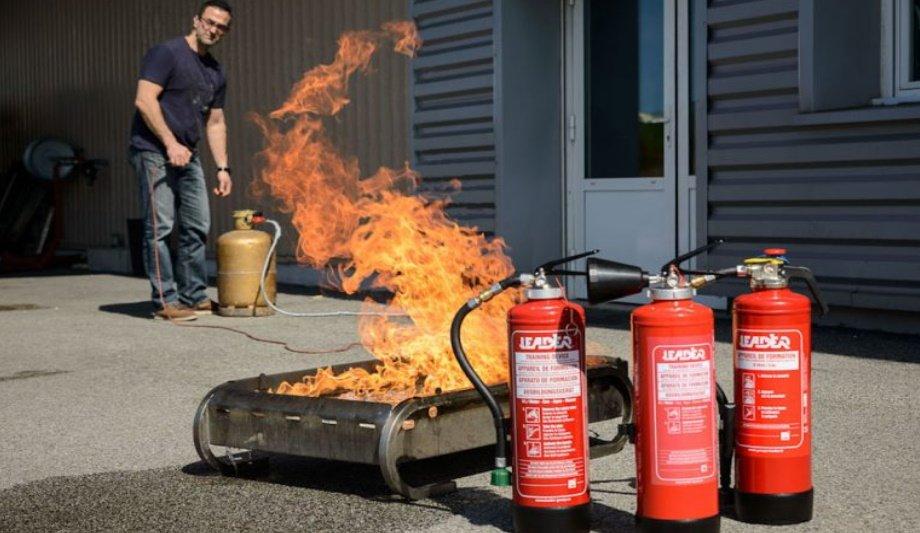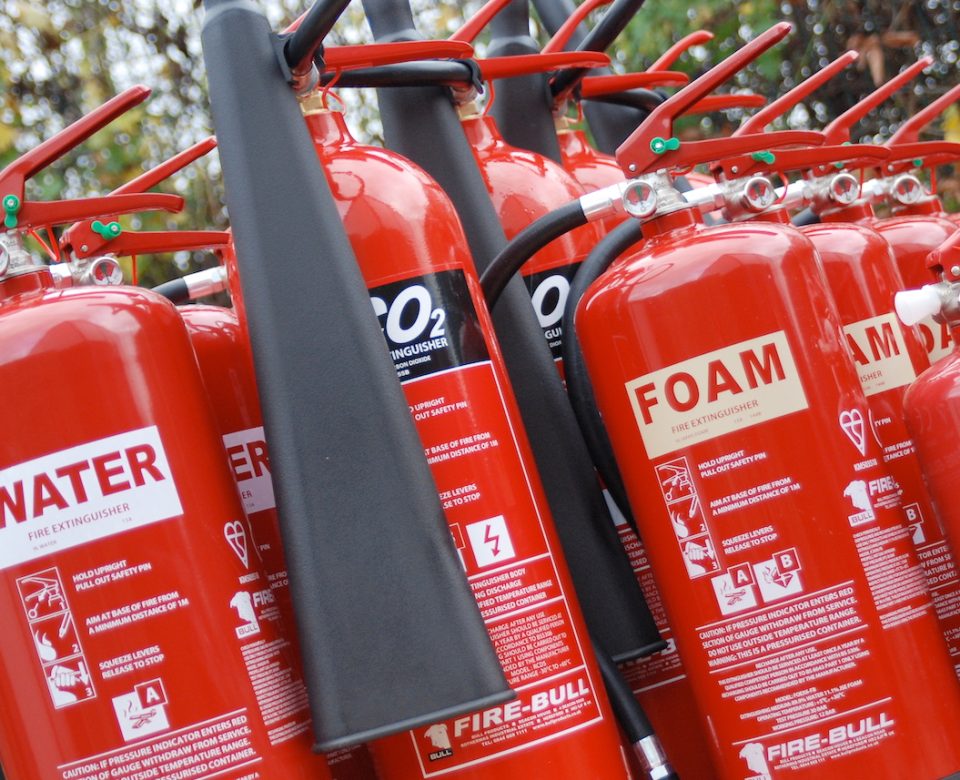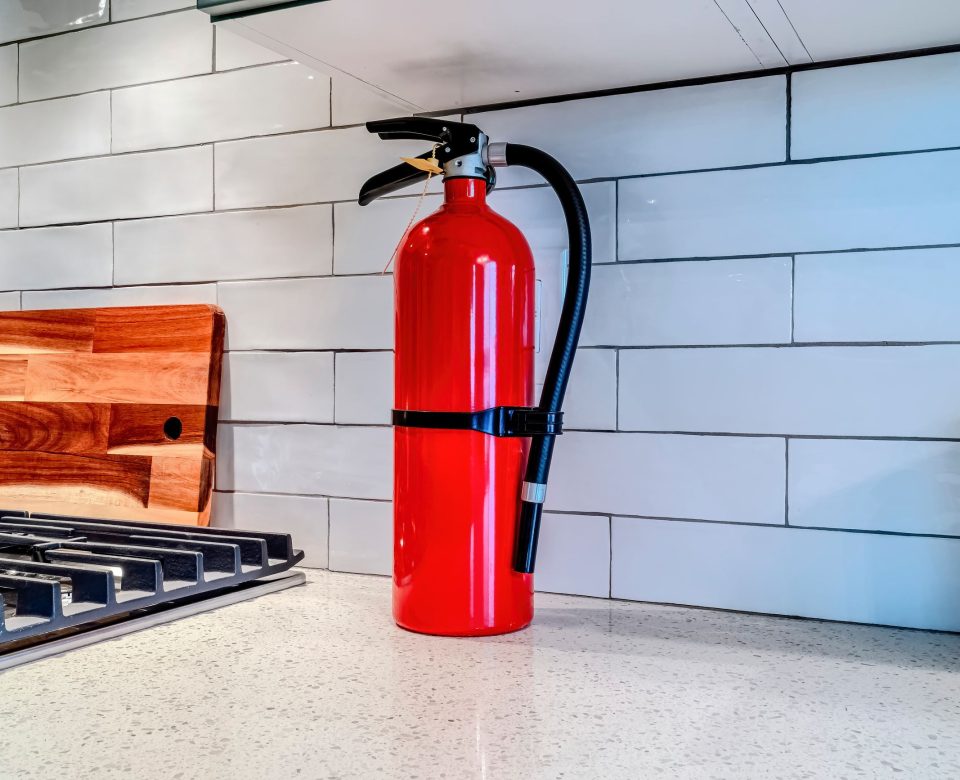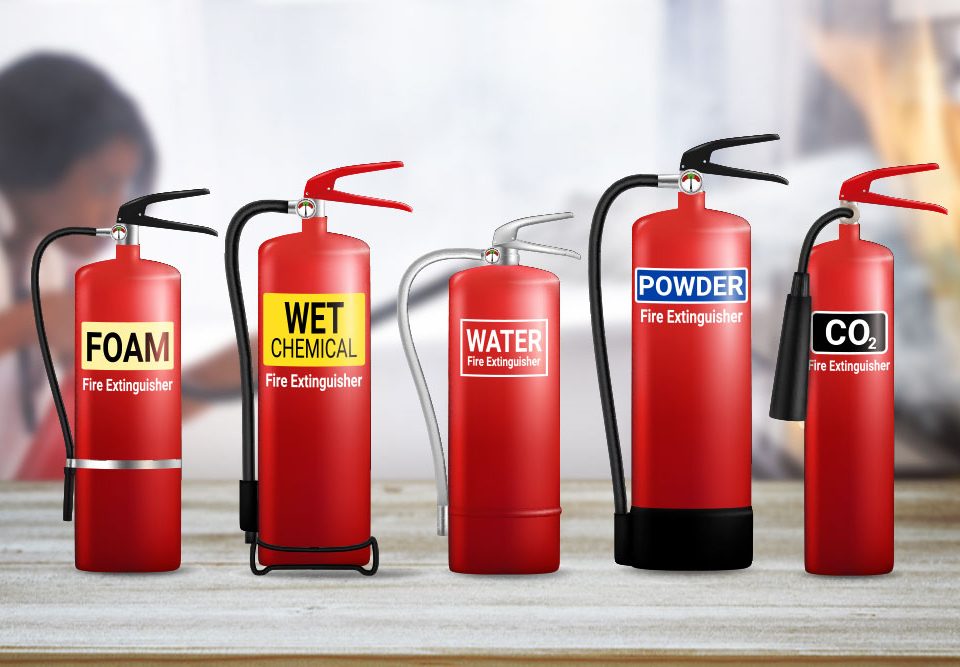
What Is The Best Type Of Fire Extinguisher For Home Kitchens
October 9, 2025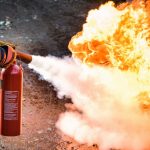
Fire Extinguisher: What Type Will Put Out a Grease Fire
October 15, 2025Grease fires are one of the most dangerous types of fires, especially in kitchens. They happen when cooking oils or fats get overheated and suddenly ignite. Because kitchens are common places for such fires, whether at home, in restaurants, or on food trucks, it’s important to know the best ways to put them out safely. One common question is, can a Class K fire extinguisher put out a grease fire? The answer is yes, but with specific instructions for safe and effective use.
Understanding Grease Fires
A grease fire starts when oil or fat becomes too hot and catches fire. Unlike regular fires, pouring water on a grease fire only makes it worse by spreading the burning oil. These fires can quickly spread and cause serious damage, especially in busy cooking areas like home kitchens, restaurants, and food trucks.
Fire Extinguisher Classes Explained
Fire extinguishers come in different classes, each designed for specific fire types:
- Class A: Ordinary materials such as wood and paper
- Class B: Flammable liquids like gasoline and oil
- Class C: Electrical fires
- Class D: Combustible metals
- Class K: Cooking oils and fats, common in kitchen fires
For grease fires, Class K extinguishers are specially made to handle the hot oils and fats in cooking environments.
What is a Class K Fire Extinguisher?
A Class K fire extinguisher uses a wet chemical agent, usually potassium acetate, to fight grease fires. It works by cooling the flames and covering the fire with a soapy foam that smothers the fire and stops it from reigniting, a process called saponification. These extinguishers are widely used in commercial kitchens but are also suitable for home kitchens where frying or cooking with oil is common.
Can a Class K Extinguisher Put Out a Grease Fire?
Yes. A Class K extinguisher is the best and safest choice for putting out grease fires. It effectively cools the fire and creates a barrier that prevents oxygen from feeding it. While smaller grease fires may sometimes be handled with Class B extinguishers, they do not guarantee the fire won’t come back. Class K extinguishers are specially designed for cooking oils and fats, ensuring the fire stays out. Proper training and use at a safe distance are essential.
How to Use a Class K Fire Extinguisher Safely
To use a Class K fire extinguisher:
- Follow the PASS technique:
- Pull the pin
- Aim at the base of the fire
- Squeeze the handle
- Sweep side to side
- Turn off the heat source before using the extinguisher.
- Stay 6 to 10 feet away from the fire.
- Avoid splashing burning oil during use.
- After extinguishing, watch the area for any signs of reignition.
When to Call the Fire Department
If the fire is large, spreading, or uncontrollable, evacuate the area immediately and call the fire department. Trying to fight a big grease fire alone is extremely dangerous.
Preventing Grease Fires
Prevent grease fires by following simple safety tips:
- Never leave cooking unattended.
- Keep flammable items away from the stove.
- Avoid overheating oils.
- Keep a Class K fire extinguisher within reach.
- Regularly clean kitchen equipment to prevent grease buildup.
Common Mistakes to Avoid
- Do not use water or flour on grease fires, they can spread flames or cause explosions.
- Avoid moving the burning pan; it can cause oil to spill and spread the fire.
- Do not use the wrong type of extinguisher.
- Always turn off the heat source before attempting to extinguish the fire.
Conclusion
A Class K fire extinguisher is the safest and most effective tool for putting out grease fires. Whether you’re in a home or commercial kitchen, having one nearby and knowing how to use it can save lives and protect property. Always prioritize safety, practice fire prevention, and keep your fire extinguisher maintained for emergencies.
For reliable fire safety equipment such as fire extinguisher cylinders, fire extinguisher balls, or CO2 fire extinguishers, check out Haseen Habib. They offer competitive fire extinguisher prices and expert advice to help you select the best option for your needs.
FAQs
- Can I use a Class B extinguisher for a grease fire?
Class B extinguishers can be used for some oil fires but are less effective and risk fire reignition. - Are Class K extinguishers suitable for home kitchens?
Yes, they are highly recommended for both home and commercial kitchens. - What’s the difference between Class K and Class B extinguishers?
Class K uses wet chemicals for cooking oils; Class B targets flammable liquids but isn’t ideal for grease fires. - How often should a Class K extinguisher be checked?
It should be serviced at least once a year to ensure it is in working condition. - What if the grease fire reignites?
Evacuate immediately and call the fire department without trying to combat the fire again.

